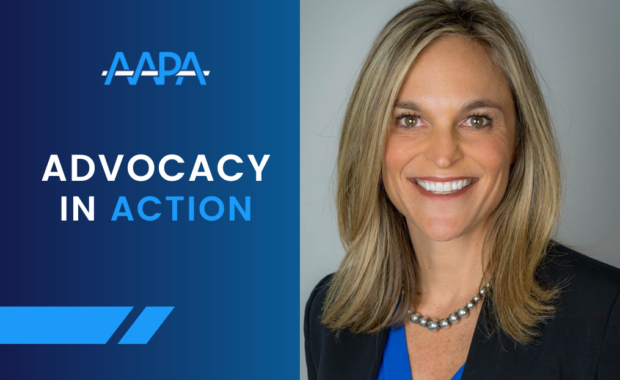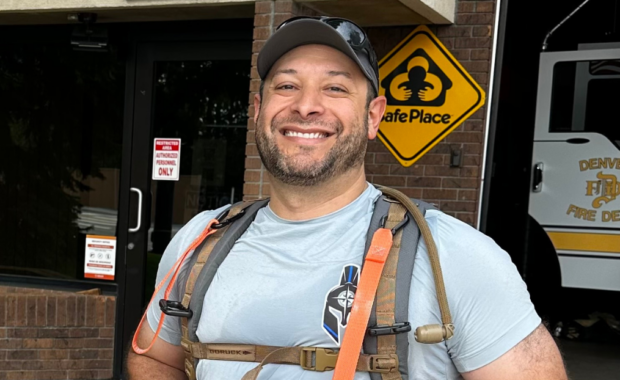A Day in the Life of a PA with Semester at Sea
“I learned to expect the unexpected and to think outside of the conventional standard of care that I am used to”
June 9, 2025
By Randy Orsborn, MPAS, PA-C, CAQ-EM
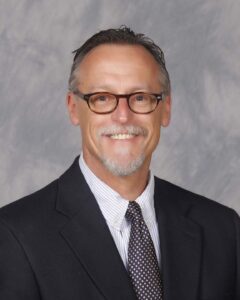
I’ve truly had a blessed professional life. Before graduating from PA school, I had a 26-year career as a paramedic in both the hospital and fire service-based settings. I also worked as a flight paramedic for the first remote-based helicopter program in the country, Grant Lifeflight (later known as Medflight of Ohio).
After graduating PA school in 2001, I began my journey as a PA-C in general cardiology. Twelve years later, I found myself gravitating back to my emergency medicine roots and began working full time in the emergency department (ED) and urgent care (UC). In December 2023, I left full-time clinical practice to work locum tenens in the ED and UC, and to work contingent wound care, for our local Wound Center.
Shortly after, with the encouragement of my two sons—both alumni of the Semester at Sea program—I applied for a position as the ship’s Advanced Practice Provider (APP) and found myself preparing for the pinnacle chapter in my career: practicing as a shipboard medicine PA!
And a year later, on January 2, 2025, I embarked on an adventure of a lifetime: a four-month, 20,000+ nautical mile Semester at Sea journey traveling half-way around the globe. I was selected to be part of an expert medical team to provide care to 700 college students, faculty and staff members, and life-long learners aboard an educational cruise liner, the MD Odyssey.
In cooperation with Colorado State University, students from all over the world participated in college classes and various on-board educational opportunities. The ship departed from Thailand and traveled westward, visiting 13 cities, 10 countries, and three continents. Among the many countries explored were Thailand, Vietnam, Malaysia, India, Kenya, South Africa, Ghana, Morocco, Spain, and Germany.
I was accompanied by my wife of 42 years, who worked as the co-coordinator for the 32 ship children (kids and teenagers) who accompanied their parents during our voyage.

Practicing medicine while out at sea
Our days started around 5:30 a.m. with coffee, world news updates, and computer-generated brain teasers. This was followed by a one-hour walk on the ship’s open deck, watching the sunrise, and visiting with the ship’s crew members and other early risers. Then I had a quick breakfast, took a speedy shower, and was off to work.
Along with board-certified ED physician, Dr. Mairin Smith from Virginia, I joined a team of nurses to provide UC-styled medicine to program participants. Together, we shared emergency calls and often consulted with the ship’s physician on cases involving crew members.
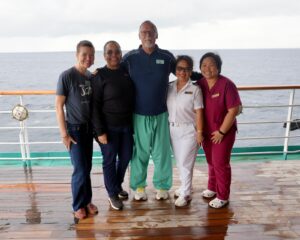
While at sea, the medical team provided two, one-hour clinics each day, with several shorter clinics while at port and just prior to embarkation to the next port-of-call.
My morning clinic was followed by a one-hour care team meeting, where we discussed cases involving academic, medical, and/or emotional needs and concerns of SAS participants.
Following my care team session, I had the opportunity to attend classes, converse with the ship’s crew, students, faculty and staff, or to just read and relax—as our second clinic of the day didn’t begin until 4:30 p.m.
Dr. Smith and I shared emergency/after hour calls (usually three to four days at a time) while at sea, which was generally eight days between ports. During this period, we consulted with the ship’s physician on cases involving crew members and responded to after-hour shipboard emergencies.
We were blessed to have a wonderful group of nurses who triaged our cases at night and between clinic hours, and assisted us during our posted clinic hours.
Travel broadens the mind . . . and loosens the bowels
Common cases involved GI concerns, upper respiratory infections, minor orthopaedic injuries, and other common ailments. Patients with more severe illness or injury (pneumonia, DVT, cardiac dysrhythmia, and appendicitis) were treated, stabilized, and then transferred to a local medical facility once the ship arrived at the next port.
In all, we saw approximately 1,400 cases during our 105-day adventure and ultimately concluded the trip without any major emergencies or life-threatening situations. A successful voyage by most standards.
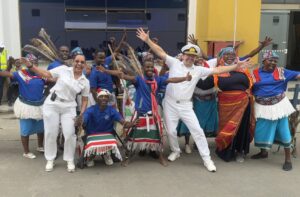
Port days were mutually divided between Dr. Smith and me, giving us both the opportunity to engage in cultural experiences, try the local food and drink, and explore.
A once-in-a-lifetime opportunity
Semester at Sea was a unique and wonderful learning opportunity, one for which I am forever grateful that I had the chance to experience. Shipboard medicine placed me in a position to constantly expect the unexpected and to think outside of the conventional standard of care that I am used to.
Outside of clinical practice, I rode a camel, flew in a hot-air balloon, went on an African safari, and traveled by plane, car, tuk-tuk, boat, and bus. I ate and drank many things I can’t pronounce, used currency that I was totally unfamiliar with, and learned from people from all over the globe—all while practicing the profession that I love and have dedicated my life to.
Randy Orsborn, MPAS, PA-C, CAQ-EM, is an Emergency Medicine PA from Mount Vernon, Ohio. He currently holds active medical licenses in Ohio, West Virginia, Pennsylvania and Nebraska.
You May Also Like
The Interconnected Journey of a PA: From Rejection to Innovation in Primary Care
A Day in the life of a Urogynecology PA
PAs in Administration Offer Advice for Expanding Leadership Skills
Thank you for reading AAPA’s News Central
You have 2 articles left this month. Create a free account to read more stories, or become a member for more access to exclusive benefits! Already have an account? Log in.

